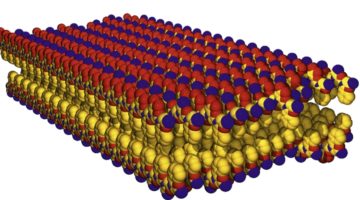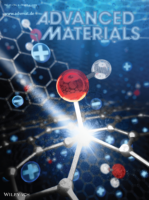High-pressure experiments at Beamline 12.2.2 on ferropericlase—the presumed weakest mineral found in the Earth’s lower mantle—help explain why subducted slabs of Earth’s crust stall at a depth of around 1000 km (~625 miles). Read more »![]()
April 27, 2015-Special ALS Colloquium
Special Event on Monday, April 27 @ 12 noon, USB 15-253 X-Ray Microscopy: The First 120 Years Janos Kirz, ALS Abstract Röntgen’s great discovery became an instant public sensation. Fascination with the “new kind of rays” that could reveal the structure of opaque objects swept the world in 1896. Fifty years later it was widelyRead More Read more »
2015 ALS Shutdown
The upcoming long-term operating schedule has been published and users will note that it includes an extended shutdown period (October 26, 2015-January 13, 2016) for the ALS. The lengthy shutdown is in part because it spans the Thanksgiving and Holiday shutdown periods, as well as being indicative of the amount of time required to implement major upgrades. The main project for this shutdown is the completion of the final phase of the Storage Ring Radio Frequency (SRRF) Upgrade. Read more »
Peptoid Nanosheets Offer a Diversity of Functionalities
Researchers at the ALS have recently observed peptoid nanosheets as they self-assemble at an oil–water interface. This development opens the door to designing peptoid nanosheets of increasing complexity and functionality for a broad range of applications, including improved chemical sensors and separators, and safer, more effective drug-delivery vehicles. Read more »![]()
![]()
A Milky Mystery: The Case of the Casein Micelles
We all know that milk contains important nutrients such as calcium and protein that help build bones and muscle. But how much do we really know about these ingredients at the molecular level? To learn more, scientists from New Zealand and Australia came to the ALS to x-ray some milk.
Read more »
Molecular Structure of Water at Gold Electrodes Revealed
ALS researchers have now made a first-ever observation of the molecular structure of liquid water at a gold surface under different charging conditions. This marks the first time that the scientific community has been able to achieve such high sensitivity in an in situ environment under working electrode conditions. Read more »![]()
![]()
Protein Instability and Lou Gehrig’s Disease
A new study uses small-angle x-ray scattering as well as several advanced biophysical techniques to link protein instability to the progression of a lethal degenerative disease: amyotrophic lateral sclerosis (ALS), also known as Lou Gehrig’s disease. Read more »![]()
![]()
Decoding Ancient Ocean Acidification Signals from Plankton Shells
Ancient plankton shells can record the physical and chemical state of the ocean in which they grew. Decoding these signals can reveal changes in global climate, atmospheric CO2, and the acidity of the oceans in deep geologic time.
Terra Sigillata: Evolution of Roman Ceramics Reflect Changes in Technology, Life
Ancient terra sigillata ceramics were the most famous and ubiquitous Roman tableware, yet when their manufacturing spread to other locations, some of the ceramics’ characteristics changed. Researchers from France and the ALS traced the changes.
Read more »
Electronic Structure Changes in Supercapacitor Electrodes Observed In Operando
Profound bias- and time-dependent changes in the electronic structure of graphene-based supercapacitor electrodes are demonstrated under operating conditions via a combination of in operando x-ray spectroscopy and ab initio modeling by J.R.I. Lee and co-workers. The evolution in electronic structure reflects changes in the surface chemistry and morphology induced by polarization of the electrode-electrolyte interface and points to distinct pseudocapacitive and electric-double-layer capacitive channels for charge storage. Read more »
- « Previous Page
- 1
- 2
- 3
- 4
- 5
- …
- 17
- Next Page »





